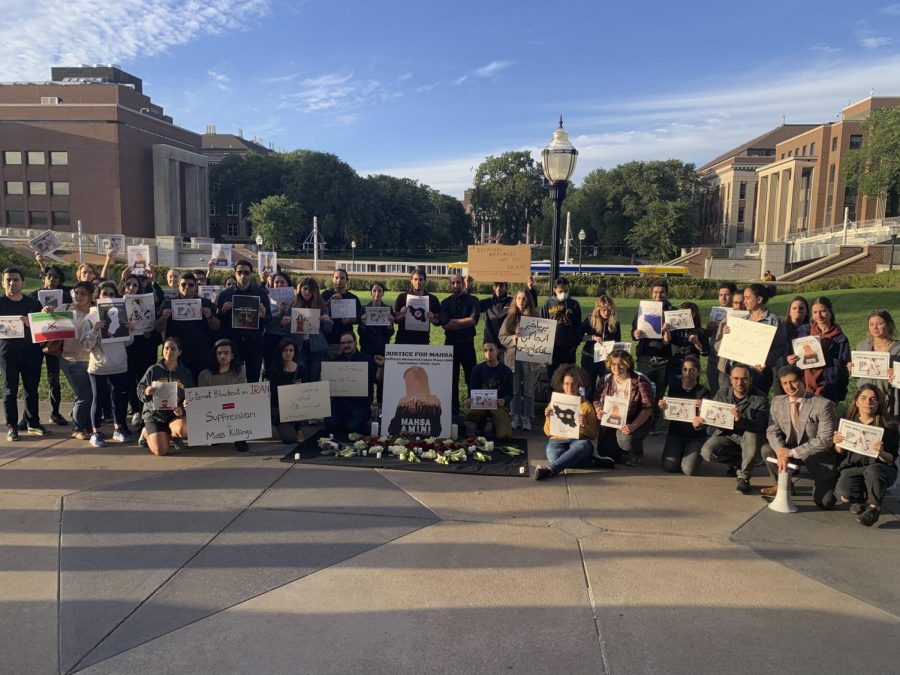SEOUL, South Korea (AP) âÄî Spy satellites trained high-resolution cameras on a coastal North Korean launch pad. U.S., Japan and South Korea deployed warships with radar and other surveillance equipment in the waters near the communist nation âÄî all for one of the most closely watched rocket launches ever. North Korea plans to launch what it says is an experimental communications satellite âÄî perhaps as early as Saturday âÄî from its Musudan-ri facility in the northeastern part of the country. Washington, Seoul and Tokyo suspect North Korea’s real motive is to test its long-range missile technology. The planned launch has sparked alarm because North Korea has admitted it has nuclear weapons and has repeatedly broken promises to shelve its nuclear program or halt rocket tests. President Barack Obama, appearing Friday with French President Nicolas Sarcozy in Strasbourg, France, called the launch “provocative” and said it should be stopped. Cloudy conditions were forecast for the launch area Saturday âÄî not perfect, but without the strong winds that could force a delay. Saturday is the start of a five-day window for the rocket, North Korea said. Fueling of the rocket at Musudan-ri appears nearly complete, South Korea’s Yonhap news agency reported, citing an unidentified government official. Experts say the launch would likely follow quickly because rocket fuels are generally highly corrosive. Efforts to persuade North Korea to give up the plan continued, though there were no signs of a last-minute diplomatic breakthrough. Two U.S. destroyers are believed to have departed from South Korea to monitor the launch. South Korea is using its destroyer equipped with Aegis ballistic missile defense technology, according to a Seoul military official who asked not to be identified, citing department policy. North Korea has complained that the U.S. is using high-altitude U-2 spy planes and has warned the aircraft would be shot down. Japan has deployed warships and Patriot missile interceptors off its northern coast to shoot down any wayward rocket parts that the North has said might fall over the area. Tokyo has said it is only protecting its territory and has no intention of trying to shoot down the rocket itself, but North Korea accused Japan of inciting militarism at home to justify developing a nuclear weapons program of its own. The North has said its rocket will fly over Japan and its first stage is expected to fall in waters less than 75 miles from Japan’s northwestern shore, according to coordinates the government in Pyongyang provided to U.N. agencies. The other zone where the second stage should fall lies in the middle of the Pacific between Japan and Hawaii. Pressure on Pyongyang to drop the plan has been intense. The U.S., South Korea and Japan discussed the issue with world leaders at the G-20 Summit in London. China, North Korea’s closest ally, said it was working to avert a launch. Beijing has tried to persuade North Korea on several occasions and will attempt to do so “to the last minute,” Chinese President Hu Jintao told his South Korean counterpart, Lee Myung-bak, on Friday in London, according to the South Korean president’s spokeswoman, Lee Dong-kwan. Obama said the planned launch has put “enormous strains” on international talks over North Korea’s disputed nuclear ambitions. The U.S. will “take appropriate steps to let North Korea know that it can’t threaten the safety and security of other countries with impunity,” he said. Stephen Bosworth, the U.S. envoy on North Korea, said the communist nation would face consequences if the launch goes ahead. But he also said he is prepared to go to Pyongyang whenever it would be useful in order to restart international negotiations aimed at getting North Korea to abandon its nuclear program. After the “dust from the missiles settles,” he told reporters, the United States will be keen to get back to the six-nation talks. Regional powers have warned of consequences, repeatedly noting that the launch would violate a U.N. Security Council resolution banning North Korea from ballistic missile activity. North Korea has warned against any efforts to censure it, claiming it, like other countries, has the right to the peaceful use of outer space. It also has threatened retaliation against any efforts to intercept the rocket, telling Japan such a move would mean “war.” Despite their opposition, the U.S., Japan and South Korea appear resigned to North Korea going ahead with the launch. Pyongyang announced the launch in advance in marked contrast to firings in 1998 and 2006. The monitoring effort is clearly the biggest for a North Korean launch. Japanese Prime Minister Taro Aso said Thursday that a Saturday launch was likely. A senior U.S. intelligence official also told The Associated Press that North Korea was on track for liftoff then. The official spoke on condition of anonymity to discuss intelligence issues. South Korea has set up task forces, including at the Defense Ministry and Joint Chiefs of Staff, to monitor and swiftly respond to a launch. The Foreign Ministry also planned to meet Saturday to draw up post-launch measures. Lee was likely to convene a National Security Council meeting in the event of a launch, said a government official, who spoke on condition of anonymity because a final decision had yet to be made. Japan and other nations plan to request an emergency session of the U.N. Security Council as soon as this weekend. A strong united response likely would prove difficult, however, because China and Russia hold veto power in the council and could argue that the 2006 ban does not extend to nonmilitary space missions. Still, Hu agreed with Lee that the “rocket launch would negatively affect peace and stability in Northeast Asia and there should be a discussion among related countries” after it takes place, Lee’s office said. Reaction among ordinary South Koreans was largely muted. Most went about their business on a pleasant spring day. Still, some tension and concern was evident. At a rally in Seoul, about 100 activists burned a North Korean flag and a missile replica plastered with leader Kim Jong Il’s portrait.
North Korea watched intently for rocket launch
North Korea plans to launch what it says is an experimental communications satellite, perhaps as early as Saturday.
Published April 3, 2009
0
More to Discover







